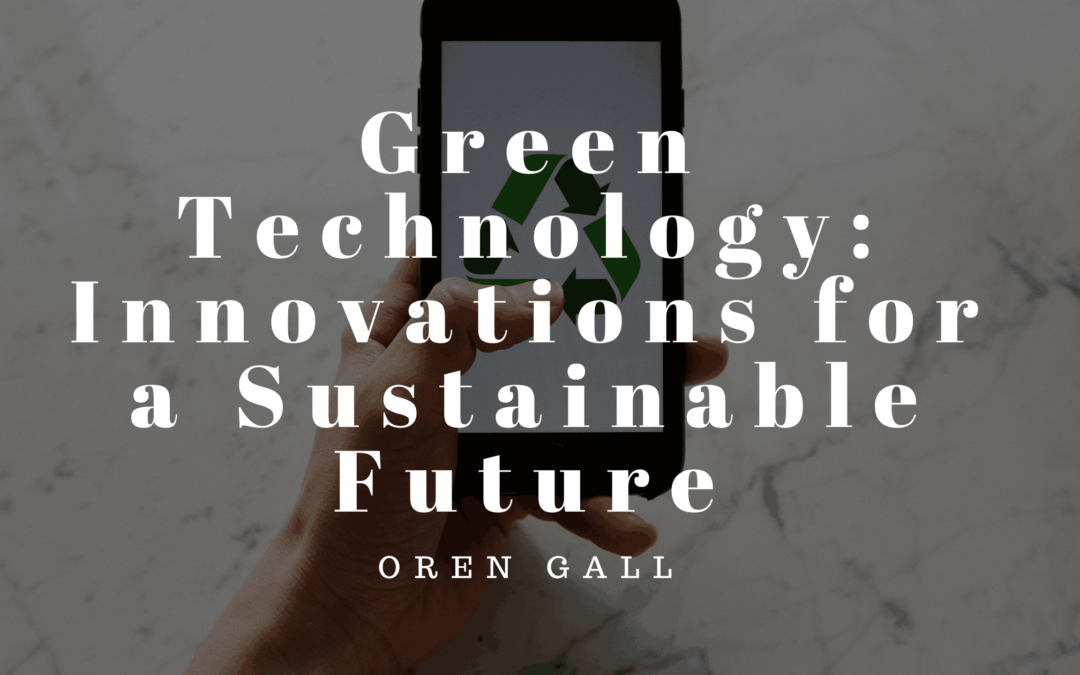The world is grappling with the urgent need to address climate change, resource depletion, and environmental degradation. Green technology, also known as clean technology, offers innovative solutions to these challenges. By promoting sustainability and reducing ecological footprints, green technology is paving the way for a cleaner, greener future.
What is Green Technology?
Green technology refers to products, services, and practices designed to mitigate or reverse environmental damage. It encompasses a wide range of innovations aimed at conserving resources, reducing emissions, and promoting sustainable development. The core principles of green technology include:
- Energy Efficiency: Reducing energy consumption without compromising functionality.
- Renewable Resources: Utilizing natural resources like sunlight, wind, and water sustainably.
- Waste Reduction: Minimizing waste generation through recycling and upcycling.
Key Innovations in Green Technology
- Renewable Energy Sources
- Solar Power: Solar panels convert sunlight into electricity, reducing dependence on fossil fuels. Innovations like transparent solar panels and solar skins enhance the versatility of this technology.
- Wind Energy: Wind turbines generate clean energy, with offshore wind farms gaining prominence for their efficiency.
- Hydropower: Advances in micro-hydropower systems enable energy generation from small streams and rivers.
- Energy Storage Solutions
- Batteries play a crucial role in storing renewable energy. Lithium-ion batteries, solid-state batteries, and flow batteries are revolutionizing energy storage for homes, businesses, and electric vehicles (EVs).
- Electric Vehicles (EVs)
- EVs are transforming the automotive industry by reducing greenhouse gas emissions. Breakthroughs in battery technology, such as fast-charging and longer-lasting batteries, make EVs more accessible.
- Green Building Technologies
- Smart buildings integrate energy-efficient designs, sustainable materials, and IoT devices to optimize energy use. Innovations include green roofs, passive solar designs, and net-zero energy buildings.
- Carbon Capture and Storage (CCS)
- CCS technologies capture carbon dioxide emissions from industrial processes and power plants, storing them underground to prevent atmospheric release.
- Sustainable Agriculture
- Vertical farming, precision agriculture, and organic farming methods reduce resource use while increasing productivity. Technologies like drones and AI are making farming more efficient and eco-friendly.
- Circular Economy Initiatives
- Companies are adopting circular economy models, where products are designed for reuse, repair, and recycling. Examples include biodegradable packaging and waste-to-energy systems.
- Water Purification and Conservation
- Advanced filtration systems and desalination technologies are ensuring access to clean water. Smart irrigation systems help conserve water in agriculture.
Benefits of Green Technology
- Environmental Protection: Reduces pollution and preserves ecosystems.
- Energy Independence: Promotes the use of local renewable energy sources, reducing reliance on imported fuels.
- Economic Growth: Creates jobs in renewable energy, recycling, and green construction sectors.
- Health Improvements: Reduces air and water pollution, leading to better public health outcomes.
Challenges in Implementing Green Technology
- High Initial Costs
Many green technologies require significant upfront investment, which can deter widespread adoption. - Technological Barriers
Some technologies, like advanced batteries and carbon capture systems, are still in the early stages of development and need further refinement. - Policy and Regulation
Inconsistent regulations and lack of incentives can slow the adoption of green technologies. - Public Awareness
Many people are unaware of the benefits and availability of green technologies, limiting their adoption.
The Future of Green Technology
The future of green technology is bright, with trends pointing toward greater innovation and adoption:
- Smart Grids: Intelligent energy networks will optimize the use of renewable energy.
- Hydrogen Energy: Green hydrogen, produced using renewable energy, will play a critical role in decarbonizing industries.
- Artificial Intelligence: AI will optimize energy usage, waste management, and environmental monitoring.
- Global Collaboration: Nations are joining forces through agreements like the Paris Accord to invest in green technology solutions.
Green technology represents humanity’s commitment to a sustainable future. By leveraging innovative solutions, we can combat climate change, preserve resources, and ensure a healthier planet for future generations. As individuals, businesses, and governments work together to embrace these technologies, the vision of a cleaner, greener world becomes more achievable every day.
